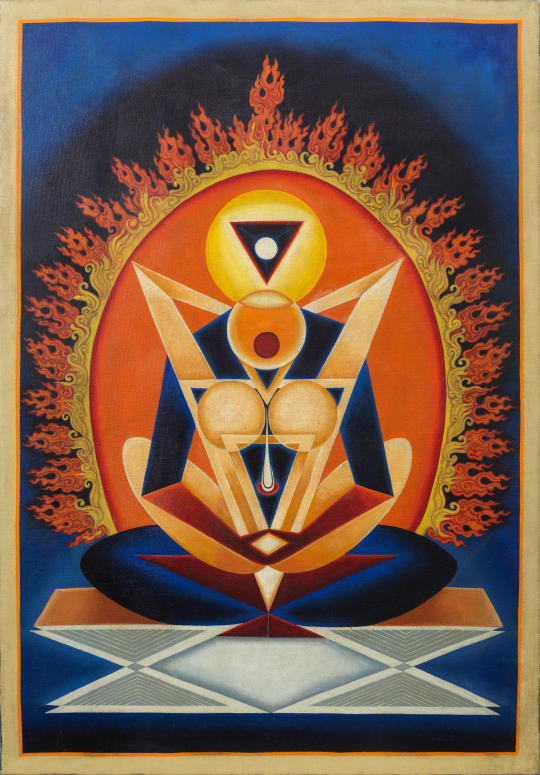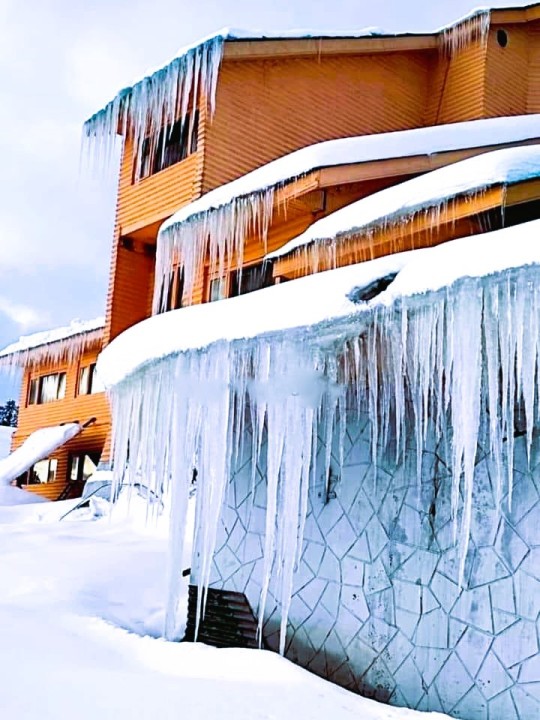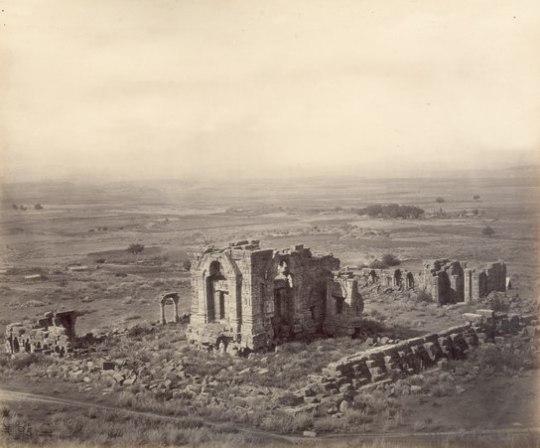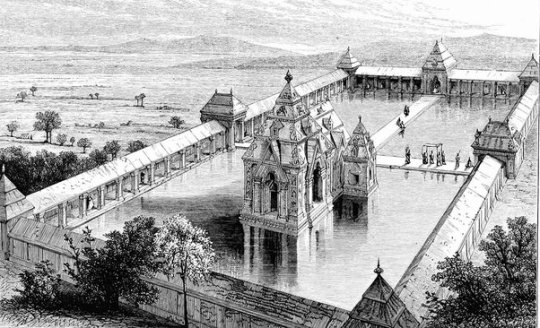#kashmiries
Explore tagged Tumblr posts
Text

Ghulam Rasool Santosh (Kashmiri, 1929-1997), Untitled (Fire), 1976. Oil on canvas, 103.5 x 72.5 cm.
463 notes
·
View notes
Text

Salman Rushdie, Shalimar the Clown
#salman rushdie#shalimar the clown#literature#lit#contemporary literature#modern literature#kashmiri literature#kashmir#fragment#quote#.ttf
104 notes
·
View notes
Text
I was listening to a podcast of Samay Raina and listening to him talk about how it feels to be a Kashmiri Pandit now.
You're disconnected from your culture, you don't know the food, you don't know your native place, you barely know your language, the blood of your family is spilled on the ground you were born on and you haven't even seen it. And you're not even allowed to talk about it. You feel like you're an endangered specie. Your culture is dying out and you know your children will not learn your language and culture. You know no hacks or specialities and nooks or crannies of your home town. Your culture is dying and you're just staring at it, helpless. The place where your house used to be is now ruined. You can barely recognise anything. Your home isn't here but it is your home and you can't do anything about it. You return to your home after decades, after forced exile, and. And it's levelled. Ruined. Your home is no more.
#desiblr#desi tumblr#hindublr#kashmiri pandits#if someone fucking makes this about “freeing kashmir” i will deck you.#its its so hurtful and aching#hinduphobia
107 notes
·
View notes
Text

Brass necklace
Afghanistan, 20th century or older
#pls zoom in it's a very high quality photo#also the picture of the kashmiri dancers#you can even see the details of their basis#**braids#jewelry#jewellery#Afghanistan
36 notes
·
View notes
Text
There was this insane ass woman on here that was big in like desi south Asian tumblr lol she was very clearly a hindutva but managed to pass it off as making sure people didn’t “culturally appropriate hinduism” and claimed you had to be born into it can’t convert it’s an ethnoreligion etc etc classic but anyway she ig followed the hinduism tag and would write actual ten paragraph manifestos on anyone who wasn’t south Asian and was in those tags it’s so funny and tragic to me to imagine being a random super normie white convert or even just some1 who like bought a tarp w ganesh on it at a smoke shop innocuously posting a selfie with it and suddenly an insane woman is doing fascism on your post LMFAOOOOO
44 notes
·
View notes
Text

Gulmarg, Kashmiri,India: Gulmarg, known as Gulmarag in Kashmiri, is a town, hill station, popular tourist destination, popular skiing destination and a notified area committee in the Baramulla district in the Indian union territory of Jammu and Kashmir. It is located at a distance of 31 km from Baramulla and 49 km from Srinagar. Wikipedia
125 notes
·
View notes
Text
Kashmiri;
أچھن ٟہندِ گاشهِ كوُتا كال پرارے؟
Translation;
O the light of my eyes, how long will I wait for you?
16 notes
·
View notes
Text
Kashmiri Hindus performed Havan at Anandeshwar Bhairavnath Temple in Srinagar, Kashmir This temple was closed for 3 decades due to violent anti-hindu terrorism.

Imagine opening the gates of this temple after 3 decades, all thanks to scrapping article 370! This temple is about 300 years old, one of the remaining temples in Kashmir.
Love, Peace and Protection to Kashmiri Hindus.
#hopefully kashmir will become safe for hindus and all exiled kashmiri hindus will return back to their homes & get pverdue justice#esther shrieks*#hindu temple#bharat#india#kashmir#kashmiri hindus#hindublr#hinduism#this is beautiful#hindutva
120 notes
·
View notes
Text
For queer people worlwide
If you speak any of the languages listed below you would greatly help me out if you could teach me LGBT+ vocabulary, either through DMs or just in the replies/reblogs. I'm building a global LGBT+ dictionary but some languages are just harder to access in my side of the world.
The languages are the following (in no particular order):
Kashmiri
Caribbean Hindustani
Selk'nam
Ossetian
Bolze
Erromintxela
Petu/petuh
Huilliche
Hmong
#Huilliche#Kashmiri#Caribbean hindustani#selk'nam#selknam#hmong#erromintxela#petuh#ossetian#langblr#polyglot#language#languages#idiomas#LGBT#LGBT+#LGBTQ#LGBTQI#LGBTI#LGBTA#LGBTQIA#LGBTQIA2S#Queer#LGBTTT#lgbtq community
51 notes
·
View notes
Text
Intro to Tantric Shaivism: II - Kashmiri Shaivism
In my previous write-ups I explained what Tantra is and gave a brief introduction to Tantric Shaivism. In this write-up I’ll continue my exploration of Tantric Shaivism by introducing one of the most sophisticated traditions of Tantric Shaivism: Kashmiri Shaivism. I won’t talk about the sages who inspired these schools as I think that will make the essay way too long but instead focus on the main philosophy of each school within Kashmiri Shaivism. The three main active schools of thought within Tantric Shaivism today are Kashmiri Shaivism, Saiva siddhanta and Aghori.
Kashmiri Shaivism is also known as the Trika system. It is a monistic tradition but cannot be defined as one school of thought but rather a collective of different schools that originated in Kashmir, namely: Pratyabhijna, Kula, Spanda, and Krama schools.
It is known as the Trika system because they believe that the world contains three energies:
Para (transcendental) - para
Parapara (subtle) - sukshma
Apara (gross) - sthula
The right hand side of the names: sthula, sukshma and para are the names of these energies in the saiva siddhanta tradition.
Pratyabhijna
The word pratyabhijna means “to spontaneously once again recognize and realize your Self.” Here you have only to realize, you do not have to practice. There are no upayas (means) in the Pratyabhijna system. You must simply recognize who you are. This teaching, therefore, is situated chiefly in anupaya, which is that means where there are no means at all. It is the recognition that there was nothing to be done and nowhere to go. Here, there is no practice, no concentration and no meditation.
The purpose of Pratyabhijñā is the recognition of the Śiva nature of the world (and oneself). In order to achieve that, it is necessary to induce a modified state of consciousness through the use of Śakti. Śakti, loosely translated as energy, is the dynamic aspect of Śiva, the link between finite (the human subject) and infinite (Śiva). Thus comes about the fundamental principle: "Without the help of Śakti, pratyabhijñā is impossible”.
2. Kula
Abhinavagupta, one of the main Sages of this tradition, tells us that the term Kula is derivable from the root kul, which can mean a grouping together. From this meaning we can derive one of the meanings of Kula, a human grouping, namely a family, or more specifically a spiritual family that extends as far back as Siva himself. This lineage is unified by the sequential transmission of the achieved vision of the ultimate.
The Kula system teaches you how you can live in caitanya (universal Consciousness), the real nature of yourself, in the act of ascending and descending. While you rise from the lowest to the highest you realize your nature, and while you descend from the highest to the lowest you also realize your nature.
The difference between the Pratyabhijna system and the Kula system is, that the Pratyabhijna system teaches you how to realize your own nature in one place and exist there, reside there. While the Kula system teaches you how you can rise from the lowest degree to the highest degree, and all the while, experience the nature of your Self on the same level and state. Shiva, which is realized in prithvi tattva (earth element), is the same level, the same reality of Shiva which is realized in Shiva tattva. Here, there is complete realization in every act of the world.
3. Spanda
The word spanda means “movement.” The Spanda school recognizes that nothing can exist without movement. Where there is movement there is life, and where there is no movement that is lifelessness. Spanda is the vibration or the pulse of consciousness. Every activity in the universe, as well as every perception, notion, sensation or emotion in the microcosm, ebbs and flows as part of the universal rhythm of the one reality, which is Siva ,the one God who is the pure conscious agent and perceiver.
According to the Doctrine of Vibration, man can realise his true nature to be Siva by experiencing Spanda, the dynamic, recurrent and creative activity of the absolute. It is Spanda, the inscrutable pulse of consciousness, that moves and yet moves not, that changes and yet remains eternally itself, that ensures~that both manifestation and the absolute, its unmanifest source, form part of a single process which passes freely from one to the other in such a way that both poles are the same level and equally real.
The difference between the Pratyabhijna school and Spanda are that the spanda school emphasises on the recognition and experience of the vibration of consciousness while the former emphasises direct experience of Siva as oneself.
4. Krama
Krama system shows the development of Saktha tendencies in Saiva philosophy. Based on the Kālīkula (Kālī worship) branch of Tantric Śaivism, Krama means (‘sequence’) which internalized ritual worship of goddesses as the cyclical phases (krama) of one’s own awareness. The Krama system moves in space and time, but finally leads to Paramaśiva, who is beyond space and time.
Ritual came to be understood as an inner process of realisation through which the initiate discovered his/her essential identity with Kali, who is the flow (krama) of the power of consciousness through the polarities of subject, object and means of knowledge in consonance with their arising and falling away in each act of perception.
The experience of this process coupled with the arousing of man's spiritual potential (kundalini) and the expansion of consciousness that brings it about is the most esoteric practice of the Krama system of Kashmiri Saivism.
Kashmir Shaivism shares many parallel points of agreement with the lesser known monistic school of Shaiva Siddhanta as expressed in the Tirumantiram of Tirumular. This is a very brief introduction to the different schools of thought within Kashmiri Shaivism. It is important to recognise that these philosophies draw on each other as inspiration for their practices and contain less hard drawn lines. In the next piece I’ll talk about Saiva siddhanta.
P.S. As usual if you want the links to the resources I referenced, more than happy to send them your way.
#hinduism#hindu gods#religion#theology#tantra#spirituality#hindublr#lord shiva#shiva#desiblr#kashmir#kashmiri pandits
41 notes
·
View notes
Text

Taghaful theek hai, ranjish baja lekin mohtaram!
Dil itna na dukhayen ki baat khuda tak ja puhanche.
115 notes
·
View notes
Text

Gulam Rasool Santosh (Kashmiri, 1929-1997),Untitled, 1978. Oil on canvas, 50 x 39 7⁄8 in. | 127 x 101.3 cm. (Source: Dhoomimal Gallery, New Delhi)
#art#artwork#modern art#contemporary art#modern artwork#contemporary artwork#20th century art#20th century modern art#20th century contemporary art#Kashmiri art#Kashmir artist#Gulam Rasool Santosh
19 notes
·
View notes
Text
The Martand Sun Temple, Kashmir
Dedicated to Lord Surya, Hinduism's principal sun god; Surya Dev is also recognized through his Sanskrit name Martand.
It was made by King Lalitaditya in around 5th Century A.D. and it was destructed by Muslim ruler Sikander Butshikan, under the advice of Sufi preacher Mir Muhammad Hamadani. It is believed that the was so strongly built that it took many days for its destruction.




The temple has a colonnaded courtyard, with its primary shrine in its center and surrounded by 84 smaller shrines, stretching to be 220 feet long and 142 feet broad total and incorporating a smaller temple that was previously built.
The primary shrine is located in a centralised structure (the temple proper) that is thought to have had a pyramidal top - a common feature of the temples in Kashmir. Various wall carvings in the antechamber of the temple proper depict other gods, such as Vishnu Ji and river goddesses, such as Mata Ganga and Mata Yamuna, in addition to the sun-god Surya Dev.
How it must’ve looked ->

#sun temple#mughal invasion#hindublr#hinduism#sanatan dharma#bharat#ancient india#india#kashmir#hindu temples#hindu culture#hindu architecture#indian architecture#lalitaditya#sufi#islamic terrorism#kashmiri hindus
67 notes
·
View notes
Text
It's just so telling how Penguin India markets books about Kashmir depending on the author's religion.
#see their catalogue and you'll know what i mean#the one book about the kashmiri hindus is heartbreaking.#the ones by muslims are about turbulence jihad and violence.#like. the deliberate choice of wording and marketing.
12 notes
·
View notes
Text



— Agha Shahid Ali, from The Country Without a Post Office // art by Ghazal Qadri (photographed by Zainab Mufti) // Couplet by Amir Khusro
#kashmir#agha shahid ali#ghazal qadri#amir khusro#jehangir#desi academia#dark academia#poetry#kashmiri poetry#paradise on earth#art#desi art#light academia#translation#inquilab zindabad#sufism#sufi#persian#farsi#sufi poetry#booklr#books#book quotes
37 notes
·
View notes
Text
Kashmiri ;
مے معشوق ہاو نا پان٬ بہ وندیس جان لتی یے ـ
Translation ;
𝘐𝘧 𝘮𝘺 𝘣𝘦𝘭𝘰𝘷𝘦𝘥 𝘸𝘦𝘳𝘦 𝘵𝘰 𝘳𝘦𝘷𝘦𝘢𝘭 𝘩𝘦𝘳𝘴𝘦𝘭𝘧 𝘵𝘰 𝘮𝘦, 𝘐 𝘸𝘰𝘶𝘭𝘥 𝘨𝘭𝘢𝘥𝘭𝘺 𝘰𝘧𝘧𝘦𝘳 𝘮𝘺 𝘭𝘪𝘧𝘦 𝘵𝘰 𝘩𝘦𝘳!
17 notes
·
View notes